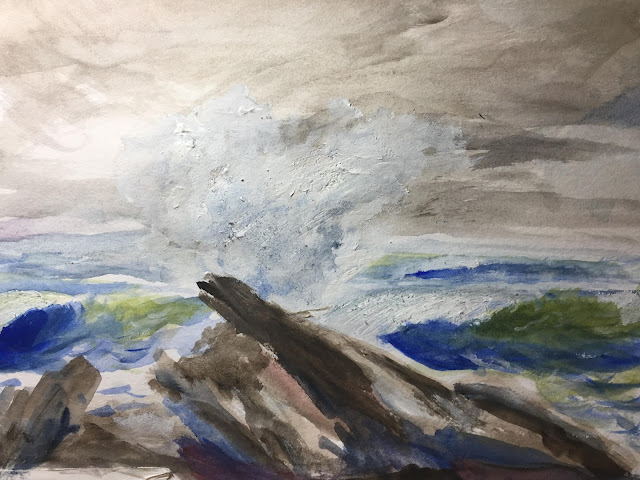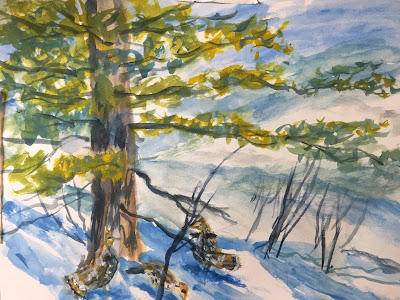Crashing Surf

I am continuing to experiment with seascapes. Despite spending many years along the coast, I still have a great deal of study to do to capture the power and movement and color of the sea. This is a small watercolor with some use of chinese white as well as scaping with a razor blade to achieve some of the whites This painting is not of an actual location, but is patterned after the rocks along the coast near Two Lights State Park in Cape Elizabeth Maine and Prouts Neck in Scarborogh, Maine. I've had the privilige of seeing a number of Winslow Homer's original paintings at the Portland Museum of Art as well as in Boston. His seascapes are incredibly powerful - and make you feel as though you are really there on the cliffs by the sea. Winslow Homer's studio is now owned by the Portland Museum of Art and tours are conducted on a regular basis. The cliff walk around Prouts Neck is also open to the public. Like many places in Maine, the trick is to find a



